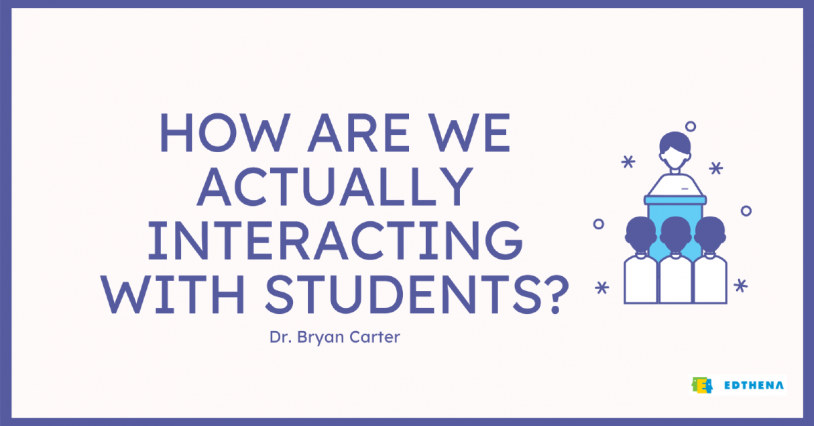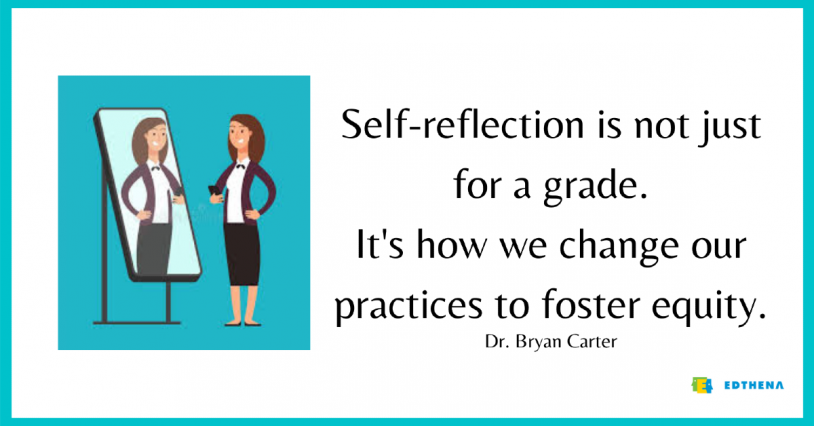Teachers: Increase Student Equity and Inclusion by Reflecting on Your Videos
Educators often review videos of their teaching to reflect on and strengthen their instructional practice. But what about increasing inclusion in the classroom for students? Video can and should also serve this larger purpose of student equity.
Dr. Bryan Carter is the undergraduate program director and a professor at the City University of Seattle in the School of Education and Leadership and is passionate about teacher self-reflection. He presented earlier this year at the American Association of Colleges for Teacher Education (AACTE) Annual Meeting on “Observing Equitable Practices: Using Online Video Observations and Reflection to Teach Equity and Inclusion in Classrooms.”
In his presentation, Bryan talked about using video observation tools to support not just teacher preparation, but to serve as teacher self-reflection for the goal of fostering greater equity and inclusion in classrooms. You can watch the full video of the presentation above, and read on for highlights and take-aways.
We already have tools to support student equity and inclusion
Bryan suggested that Edthena, partners with City University of Seattle since 2015 and serving over 1,100 CityU students, be used by teachers and teacher candidates to reflect on their interactions and behaviors with students and colleagues who are different from themselves. In turn, they can hone mannerisms and practices that are more equitable and inclusive for others. Therapists in training often do this for their work with children.
Bryan defined student equity as “providing the necessary supports and accommodations to ensure that all students can achieve the same outcome” and inclusion as “[ensuring] that all students are included, valued, and heard in the classroom, schools, communities, and our society at large.”
The big question according to Bryan? “To what extent can we utilize video of teacher candidates as a tool to discuss, reflect, and develop skills in how they interact with other humans?”
A proposal for teacher candidates includes self-reflection of recorded behaviors
Bryan proposed that teacher candidates use video to capture and analyze, using a framework provided by a Social Justice, Equity, and Inclusion course instructor, their mannerisms and other elements of communication, such as body language, tone, physical spacing, word choice, and implicit bias. This would help them understand how they may be having an impact on student equity and inclusiveness in their classrooms.
He explained further, “The concept is actually not new but it’s not something I believe that’s being fully utilized in education … video has been relegated to primarily collecting evidence of someone’s instruction, their assessment, their classroom environment … however, it’s not been hyper-focused on ‘how are we actually interacting with students?’”
Bryan underscored, “Video creates an opportunity for us to see ourselves doing something that we wouldn’t think we were doing.”
Some questions for self-reflection on presence within interactions include:
- To what extent do you see bias and assumptions (verbal and nonverbal cues) in the communication between yourself and students?
- How do students react to your communication style and language? Do you feel students understand you, and what assumptions are you making that they understand?
- Do all the students hear and react the same to what you communicate, both verbally and nonverbally?
- How do you adjust your communication to connect with each student?
- Are you listening to the students? What does your listening look like?
A teacher’s slight adjustment to nonverbal cues makes a big difference
Bryan gives a personal example of physical and nonverbal cues important to how students perceive him and how he mitigates a potential power difference. As a tall male, he senses his presence may be overwhelming, especially to younger students. Therefore, when speaking to a student, Bryan simply kneels down next to their desk instead of standing up.

A seemingly small adjustment by the teacher, but likely a big difference to students who may be more aware of the size and physical differences and be intimidated or have trouble trusting adults.
Bryan reflected, “This is an opportunity for us to highlight those small pieces that really may make the difference on whether or not a student is willing to listen to us as teachers … willing to build trust to someone who, even in their case, looks different from them. How do we foster the ability to bridge differences and show that we’re all willing to meet and find common ground?”
Bryan is excited for teacher candidates to try video self-reflection soon in the future.
“The idea again is that it’s a reflective experience not for a grade but rather … the practice of regular reflection and self-observation and [being] able to internalize what we perceive as our role versus the reality in how students perceive us and how we can change our practices and our mannerisms to help continue to foster equity and inclusion in our classrooms.”
Interested in more content about teacher reflections via video? Read more here!


